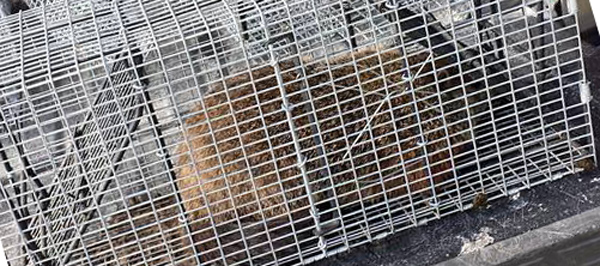- info@wildlife-removal.com
Call us for help in your town
Wildlife Removal Education
What to Do With Groundhogs After Catching Them
Need groundhog removal in your hometown? We service over 500 USA locations! Click here to hire us in your town and check prices - updated for year 2020.
During the trapping process, catching the groundhog is not the final step in the process, as once you have caught the animal you will then need to decide what you will be doing with the animal. One of the first things to consider here is that the next step will depend on whether or not you are using lethal traps or cage traps, as you will either need to remove a live animal or a carcass. There are also a number of precautions that you will need to take, as dealing with groundhogs is not easy whether it is dead or alive.

Precautions Before Dealing With Groundhogs
When they are alive they can deliver a nasty scratch or a bite that is not only painful but can transmit disease, while handling the carcass may bring you into contact with parasites such as lice and ticks. Make sure that you are wearing sturdy clothes and a thick pair of gardening gloves to protect you, and try to ensure that you have minimum contact with the animal to reduce the chances of any unwanted disease transmission.
Preparing To Remove A Cage Trap With A Live Groundhog
If you are removing a groundhog, one of the first things you should do after it has been caught in a trap is to put a thick blanket over the cage, as this may help to calm the animal and keep it more docile. When transporting the animal, use a pick-up truck or other open vehicle where possible, but if you have to transport it inside a car, make sure that you lay plenty of blankets and covers in case it defecates or urinates.
Do You Release The Groundhog Or Dispose Of It Humanely?
Relocation should be to an area that is well away from any urban areas or domestic properties, and try to find a location that is away from agricultural land too. Some areas will prohibit this relocation, so if you are in such an area, check to see if there are any places where the animal can be put down safely.
Disposing Of A Groundhog Carcass If You Are Using Lethal Traps
When it comes to removing a groundhog's carcass, make sure you wear clothing and do not make direct contact with the carcass. Although some areas will offer incineration facilities, using thick dustbin liners and double the carcass will usually seal the scent, and allow you to put the carcass out with the trash.
Go back to the Groundhog Removal page.


















